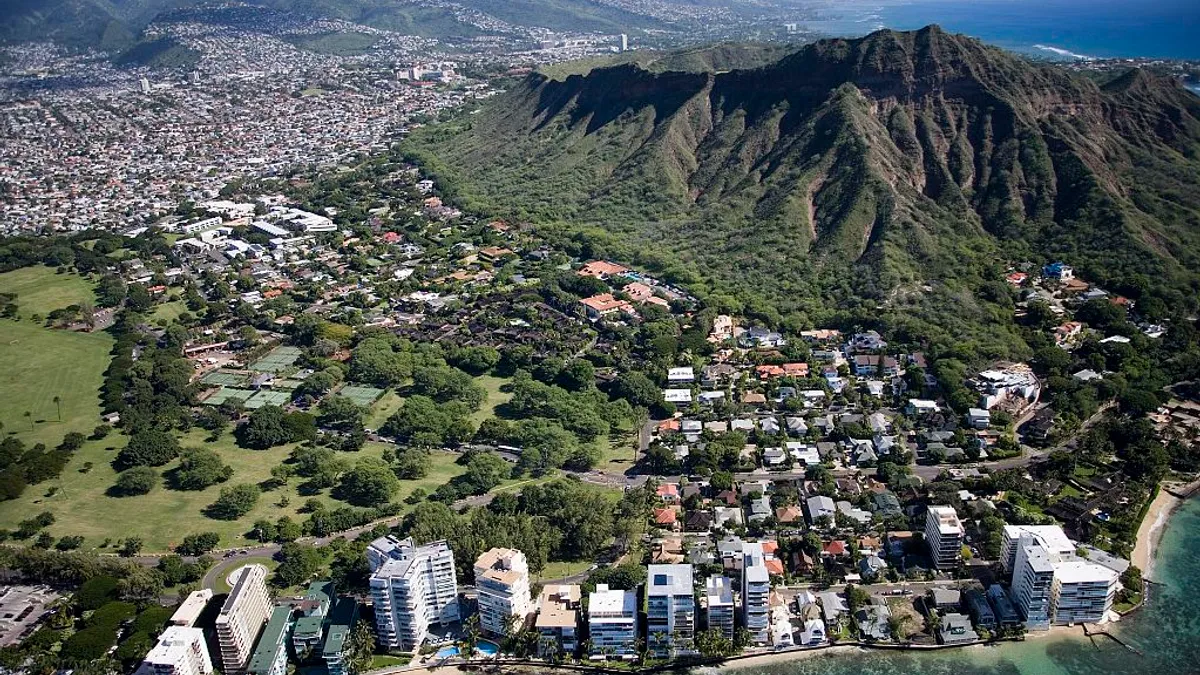Dive Brief:
- Hawaiian Electric subsidiaries Hawaii Electric Light Company (HELCO) and Maui Electric Company (MECO) have maxed out their 5 MW caps for the Grid Supply tariff for rooftop solar as of the end of July, according to a report from Hawaii Energy Law Services.
- The 25 MW cap on Oahu — the island serviced by Hawaiian Electric (HECO) — will likely be hit by October, with the utility's queue currently 78% full, Pacific Business News reports.
- As the caps are being hit, HECO is pushing customers to utilize the second rooftop solar tariff, the Self Supply option. The news follows a filing earlier this year requesting regulators to raise the caps on the Grid Supply tariff before they were hit.
Dive Insight:
Less than a year after implementing new rooftop solar tariffs, Hawaiian utilities have hit the caps on one of the tariffs, which were designed to replace the retail rate net metering program. The news could spell trouble for rooftop solar developers.
Last year, Hawaii regulators terminated the state's retail rate net metering program and replaced it with two tariffs: the Customer Grid Supply (CGS) and and the Customer Self Supply (CSS). Unlike retail net metering, the CGS option does not credit customers at the retail rate. Customers are instead credited at a fixed rate between $0.15/kWh to $0.28/kWh, depending on the island on which they are located. The CSS is different, allowing for a limited amount of inadvertent energy exportation to the grid with a minimum bill of $25 set for residential customers and $50 minimum bill for small commercial customers.
The CGS has proven more popular as can be seen by the growing rate of applications for the option. As of August 17, applications for the CGS stand at more than 2,000, whereas the CSS only has 34 applications across all the islands.
Despite concerns from solar advocates, a utility spokesperson told Utility Dive in May that isn't cause for concern when the caps are hit because of the backlog of approved — but not installed — rooftop solar projects under the previous net metering program. As a result, any increase in the caps should be limited in scope, HECO spokesperson Darren Pai wrote in an email.
"There are about 13,000 applications for rooftop PV that we have approved that have not been installed yet," he said, accounting for about 102 MW of capacity — more than three times the caps for all the utility service areas combined.
The backlog and the new tariffs have created challenges for the state's rooftop solar sector. The Hawaii Solar Energy Association reported a 39% drop in employment from October 2015 to July 2016. About 88% of the state's solar companies are reporting job losses following Hawaii's decision last year to end its retail net metering program.













